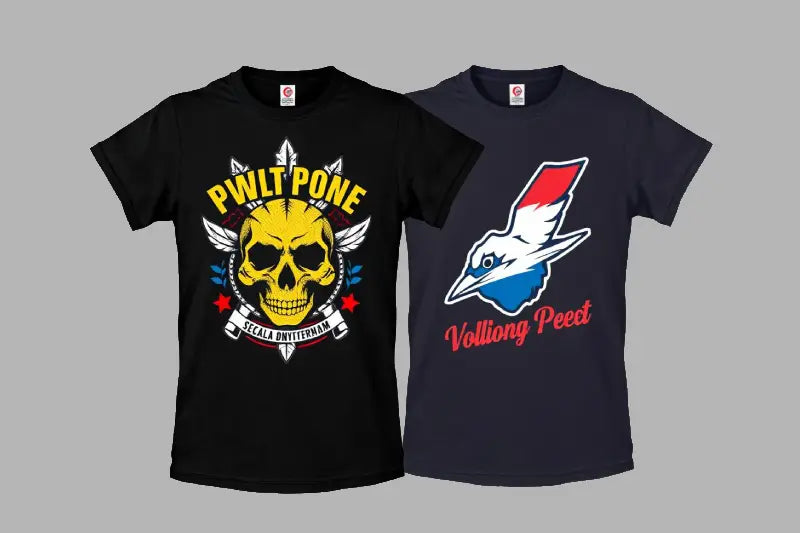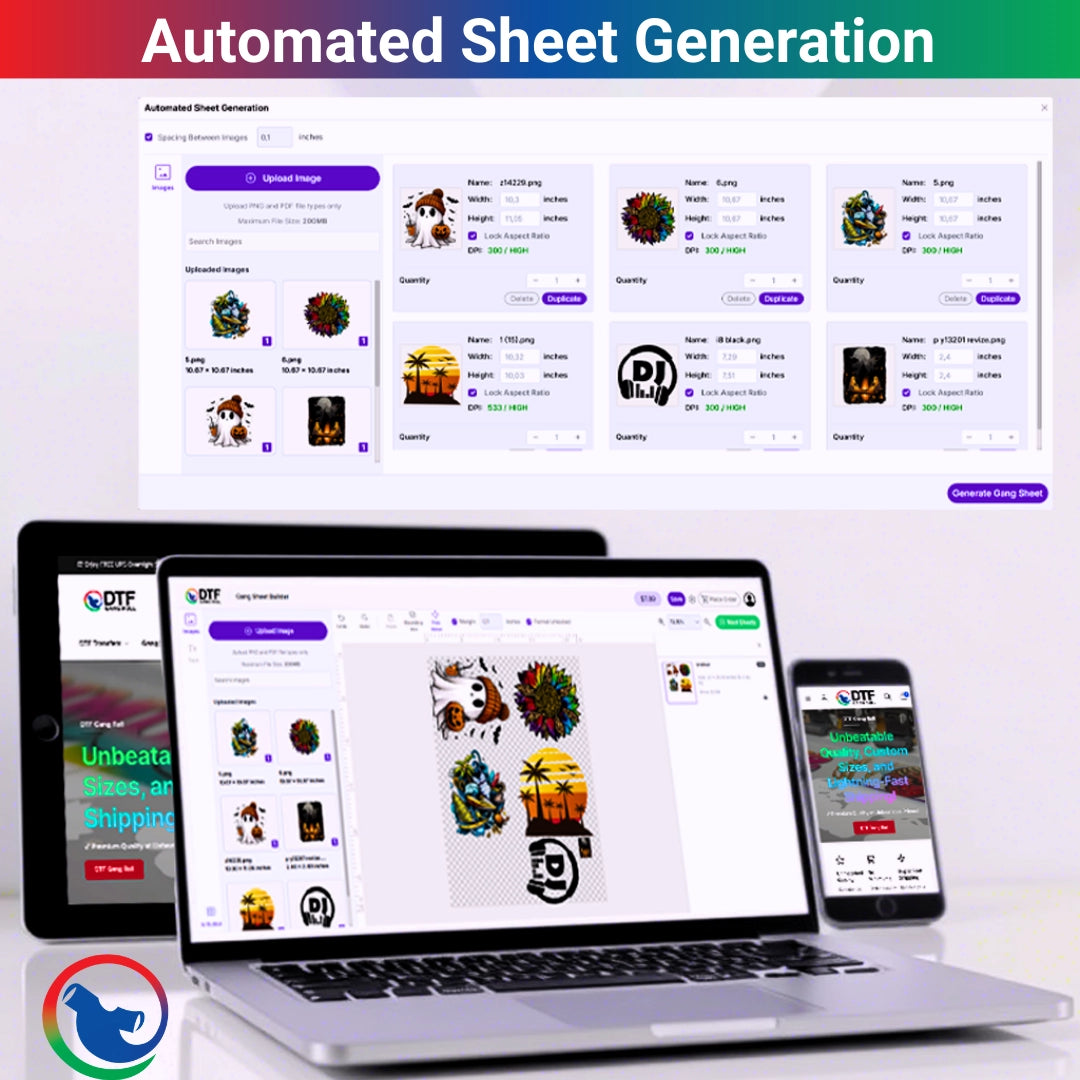One of the most common words you will hear in DTF is “Peel.” It may sound simple, but it can be somewhat technical for those new to the DTF business. However, there's no need to be overwhelmed by it; it’s very easy to understand and apply.
In this post, we'll explore the definition of a peel, how to select the appropriate one, the types of peels (Hot Peel vs. Cold Peel in DTF), the advantages of hot peel DTF, when to use cold peel DTF, and how to use each one correctly. This is a crucial step in your journey towards a sustainable DTF business because how you use DTF peel will make or break your designs. And you don’t want to waste money or get frustrated over bad results. Continue reading to learn more about it so that you can do it right from the start.
What is a Peel in DTF Printing?
During DTF printing, your design is printed on a specific PET film, coated with adhesive powder, and heat-pressed onto a piece of clothing. The peel type is how and when you remove the film after pressing.
A hot peel means you remove the film immediately after pressing while it’s still hot. Cold peel is waiting until the transfer and garment have completely cooled before pulling the film away. This slight difference plays a big role in how the print adheres, looks, and applies, making it critical to understand the difference between hot and cold peel DTF.
Hot Peel vs. Cold Peel in DTF: Key Distinctions
For rapid application, hot peel transfers are the best. You remove the PET film right after pressing without waiting for it to cool. This makes them ideal for quick production, particularly when printing dozens of shirts or utilizing DTF gang rolls to expedite the process. It’s often considered the best peel method for DTF when time is a factor.
Cold peel transfers take longer because you have to wait for the print to cool down before removing the film. It might seem annoying to wait, but it's often worth. You get finer details, brighter colors, and the print sticks better. So, if you want vibrant DTF results, cold peel is the way to go.
Hot peel is usually what people use for sportswear and big orders when they need to be fast and want a matte look. If you're doing custom apparel, detailed designs, or colorful stuff, cold peel is a better bet. Knowing the difference helps you choose the right peel.
Moreover, your material matters, too. Cold peel films usually stick better to stretchy or delicate stuff. That makes them great for blends, Lycra, or workout clothes. Also, it's easier for newbies since you don't have to rush to peel when the film is hot.
How to Decide Between Hot and Cold Peel
The choice between hot and cold peel depends on several factors. First, consider your project type. Hot peel helps save time and speed up your process for bulk orders, such as school events or holiday tees. This makes it ideal when production needs to move fast.
Cold peel could be the better option if you're working on high-end designs for boutique fashion. It provides better detail and color payoff, which is useful for gradients, layered colors, and small fonts. If you're aiming for the best peel for vibrant DTF results, cold peel is usually the way to go.
Your equipment also plays a role. Cold peel is more forgiving if your press has uneven pressure. Hot peel requires consistent, firm pressure for clean peeling, an essential part of any DTF hot peel guide.
Skill level matters, too. If you’re still learning, cold peel allows more control, especially as you're getting used to terms like DTF cold peel time and cold peel DTF temperature.
Fabric type matters as well. Tougher or stretch fabrics usually respond better to cold peel, while hot peel works well for basics like cotton and cotton-poly blends.
Using Hot Peel in DTF Printing: Instructions
Timing and pressure define DTF hot peel printing. When done correctly, it's fast, efficient, and gives a clean, professional result. Here's a basic DTF hot peel guide:
-
Pre-press your garment for a few seconds to eliminate moisture and wrinkles.
-
Position your DTF transfer design side down on the fabric.
-
Press at 280°F to 300°F for 12 to 15 seconds using firm, even pressure.
-
Peel the film off immediately while it's still hot. This is critical among all DTF hot peel instructions.
-
For better durability, post-press under parchment paper for 5–10 seconds.
Hot peel is ideal for high-volume jobs and tight deadlines. One of the most significant advantages of hot peel DTF is its speed. However, it requires more experience and precision. Incorrect timing or pressure can lead to print issues.
How to Apply Cold Peel in DTF Printing
With cold peel, you get more control. Though slower than hot peel, it produces sharper, more vibrant results. Here’s how to do it:
-
Pre-press the garment to flatten and remove moisture.
-
Place the DTF film design side down.
-
Press at a cold peel DTF temperature of 280°F to 320°F for 15 to 20 seconds.
-
Let the fabric cool to room temperature before peeling (this is your DTF cold peel time).
-
Peel gently and evenly. The design should lift cleanly.
-
Post-press under parchment or Teflon for 5–10 seconds for added smoothness.
Cold Peel DTF is great for detailed designs and logos where you need things to be super accurate. Yes, it takes a bit longer (which is one of the only disadvantages of cold peel DTF), but the final product is usually worth it, especially if you're after that top-notch quality.
Which of the Two Should You Choose?
There’s no single answer. It depends on your priorities. If you need speed and efficiency, hot peel is likely your go-to. It’s perfect for basic graphics and bulk jobs.
But if your focus is on print quality and color richness, especially on specialty fabrics, cold peel offers the best peel method for DTF outcomes.
Many experienced users keep both options in their workflow. Switching between them depending on the job gives you ultimate flexibility.
Final Thoughts
Knowing when to use hot or cold peel DTF can really up your DTF printing game. How you peel it makes a big difference in how your print looks, feels and lasts. Try both methods and see what works best for your designs, fabrics, and setup. You'll soon get the hang of it. Experiment with both types. See how each performs with your designs, fabrics, and equipment. With practice, you’ll develop a feel for what works best.
Still unsure? Try a DTF sample pack that includes both hot and cold peel films. Testing both firsthand is the easiest way to choose the best setup for your workflow and to deliver the best results.

